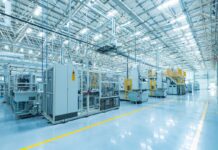
Image credit: CSIRO
CSIRO will join forces with NSW-based start-up Solafast and high-tech Melbourne printing company Norwood to deliver a world-first project aimed at creating cheaper electricity systems by using printed solar panels.

Image credit: CSIRO
The initiative, which is supported by a $1.6 million investment by the Turnbull Government, will see the project partners create unique technology that can integrate printed solar cells into building products, such as roofs.
Minister for Industry, Innovation and Science, Mr Greg Hunt, said the partnership could lead to a commercial operation within the next few years, creating jobs and boosting export potential.
“This is an extremely exciting project which sees science partnering with industry to create jobs and growth potential for Australia,” Minister Hunt said.
“If successful, the two-year project will help to slash the cost of solar PV and create an environmentally responsible building material that doesn’t compromise architectural integrity.”
CSIRO Industrial Innovation’s group leader, Dr Fiona Scholes, said each project partner brings their respective expertise to the mix.
“CSIRO provides the solar know-how while Norwood can take our printed electronics into the main-stream and create large-scale industrial volumes,” Dr Scholes said.
“Solafast’s innovative steel roll-forming technology completes the picture, allowing the solar cells to be incorporated into roof and external cladding products.”
Mr Hunt said Turnbull Government’s funding was provided through the new CRC Projects (CRC-P) initiative as part of the Cooperative Research Centres Programme.
“By supporting this project, the Turnbull Government is helping Australian industry take advantage of Australia’s commercial solar market, which is estimated to be worth $250 million a year,” the Minister added.
The process of manufacturing printed solar cells involves printing ‘solar inks’ onto rolls of plastic film using industrial printing equipment. The resulting solar panels are thin, flexible and lightweight, making them easy to be incorporated into objects and structures in ways that conventional solar panels can’t be.




















